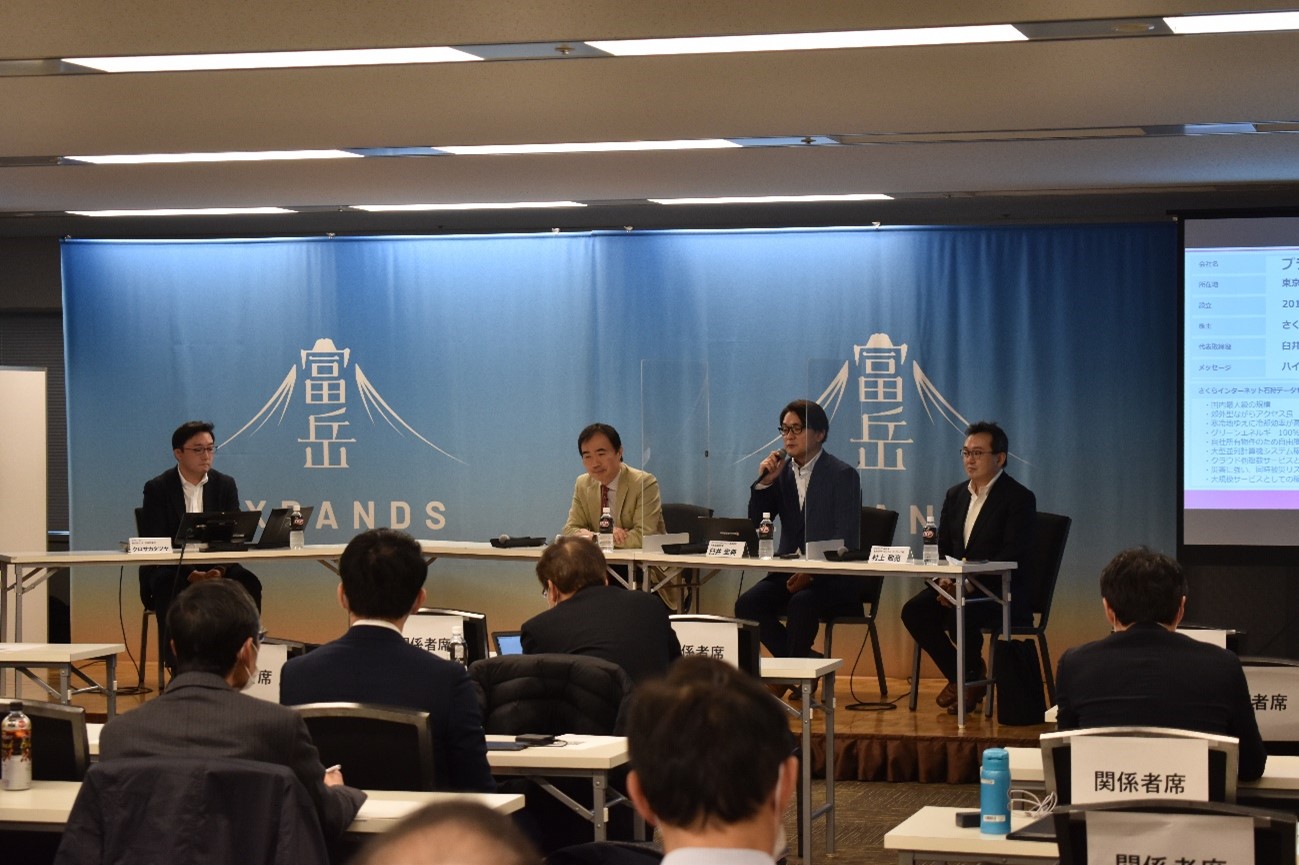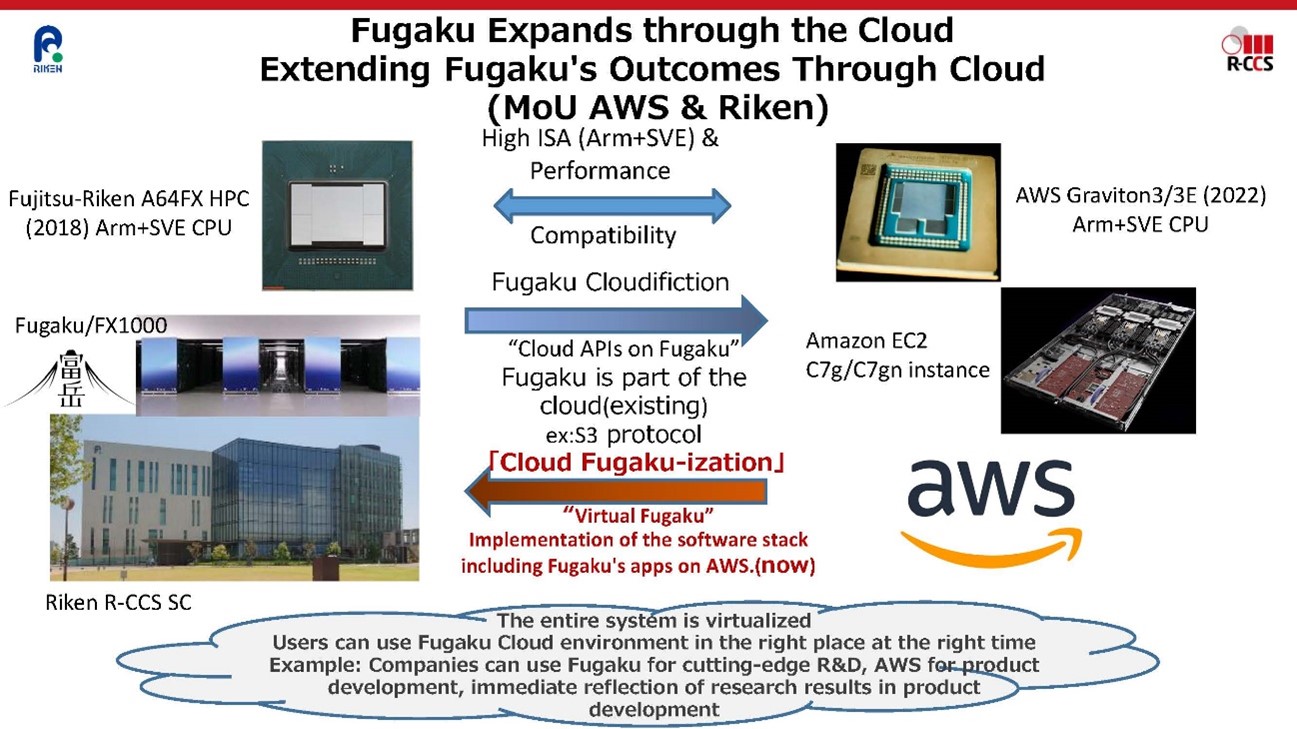The development of a national flagship supercomputer aimed at exascale computing continues to be a heated competition, especially in the United States, the European Union, China, and Japan. What is the value to be gained there? At a symposium titled “Fugaku Expands” held in Tokyo on January 24 to disseminate Fugaku’s achievements, Center Director Satoshi Matsuoka said, “The value of Fugaku is not only the hardware, but also the software solutions including the applications. It is everything.” Now there are plans to build a “Virtual Fugaku” on AWS to expand its value.

Continued Matsuoka, “Fugaku has nearly 30 programs that pursue cutting-edge science. Each of these projects has produced very impressive results, and today I have introduced some sample examples. For example, at the Japan Meteorological Agency, research on linear precipitation zones was greatly advanced by Fugaku. It has advanced so much that the JMA is purchasing the same system as Fugaku for its own exclusive use. In this way, Fugaku has achieved many results for the safety and security of the people. This is just the beginning. Various solutions have been developed in Fugaku, but the effects will be limited if they remain within the framework of Fugaku. We would like to see more development in industry and in many other areas.”
“What is really important is that Fugaku’s results include not only hardware, but also software solutions, applications, scale, and know-how. It is better to be able to use these solutions in various ways. Fugaku is a general-purpose machine, but it is an ultra-high-precision machine, hundreds of thousands or millions of times faster than an ordinary computer. This versatility was made possible because we wanted the solution to be widely used. If it only works on dedicated hardware, it will not become popular. If it does not spread, few people will use it and it will not produce results. It is technically very difficult to achieve both versatility and high performance, but with Fugaku, we were able to do it.”
Riken is considering the use of cloud technology to disseminate these results. Riken has two cloud strategies, the first of which is to convert Fugaku itself to the cloud. This strategy is to run Fugaku as a part of the cloud so that users can use not only the software but also various functions of Fugaku. The target users are assumed to be the users of Fugaku. This is a scheme where users who have conducted research at Fugaku can use the same environment as Fugaku for a fee when they develop actual products.
The partnership with AWS announced by Riken represents Riken’s second cloud strategy: AWS has a highly compatible instance of Fugaku, the c7g series, which is powered by an Arm-based AWS Graviton3 processor. Riken has taken advantage of this, and is looking to create a so-called “Virtual Fugaku” by deploying Fugaku’s software solutions on these instances.
A panel discussion was held at Riken’s symposium, and President Usui of Planus Solutions — a subsidiary of Sakura Internet Inc. a pioneering Japanese cloud provider — also participated. In response to Riken’s expansion into AWS, President Usui said, “We have sold Arm-based resources before, but they didn’t sell at all.” In response to this, Director Matsuoka said, “If you have a PC that only contains Windows, you need to install software to set up the environment in order to use it.” He emphasized that this AWS collaboration is mainly a software solution, not a hardware one.

However, there are still issues to be solved in building “Virtual Fugaku” on AWS. The software solutions developed at Fugaku, including applications, are built on Fujitsu’s program development environment, including compilers and libraries, which are proprietary products of Fujitsu and cannot be used on AWS. In order to run Fugaku’s software on AWS, it must be re-engineered to match the program development environment provided by AWS. It would take considerable time and effort to rebuild Fugaku’s software on a platform with similar processors but a completely different environment than Fugaku’s. Another option is for Fujitsu to provide their own development environment for AWS. This too would probably take time.
According to the plan outlined by Director Matsuoka, the center hopes to port several applications onto AWS by March 2023, build and benchmark the environment during the first half of FY2023, and provide them as a package to users in the second half of FY2023 (Japanese Fiscal Year begins on April 1st and ends on March 31st). However, as mentioned earlier, there are still issues to be addressed, and it is doubtful that they will be able to proceed as planned. And even if this were to succeed, the biggest issue would be whether the system would actually be used. Meanwhile, Japan has already begun a feasibility study for the development of the next flagship supercomputer after Fugaku, and the direction of the study is expected to be decided by March 2024.



























































